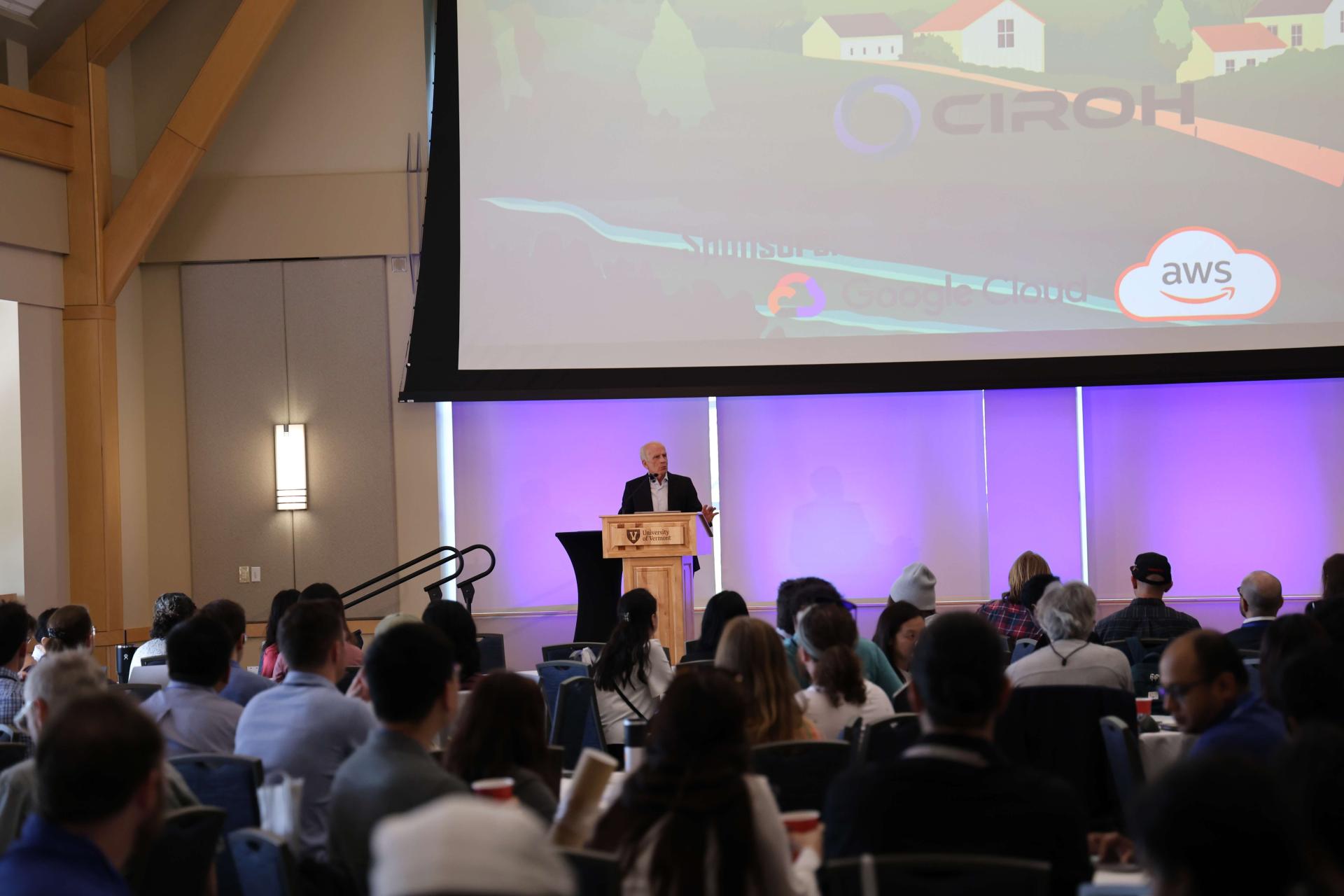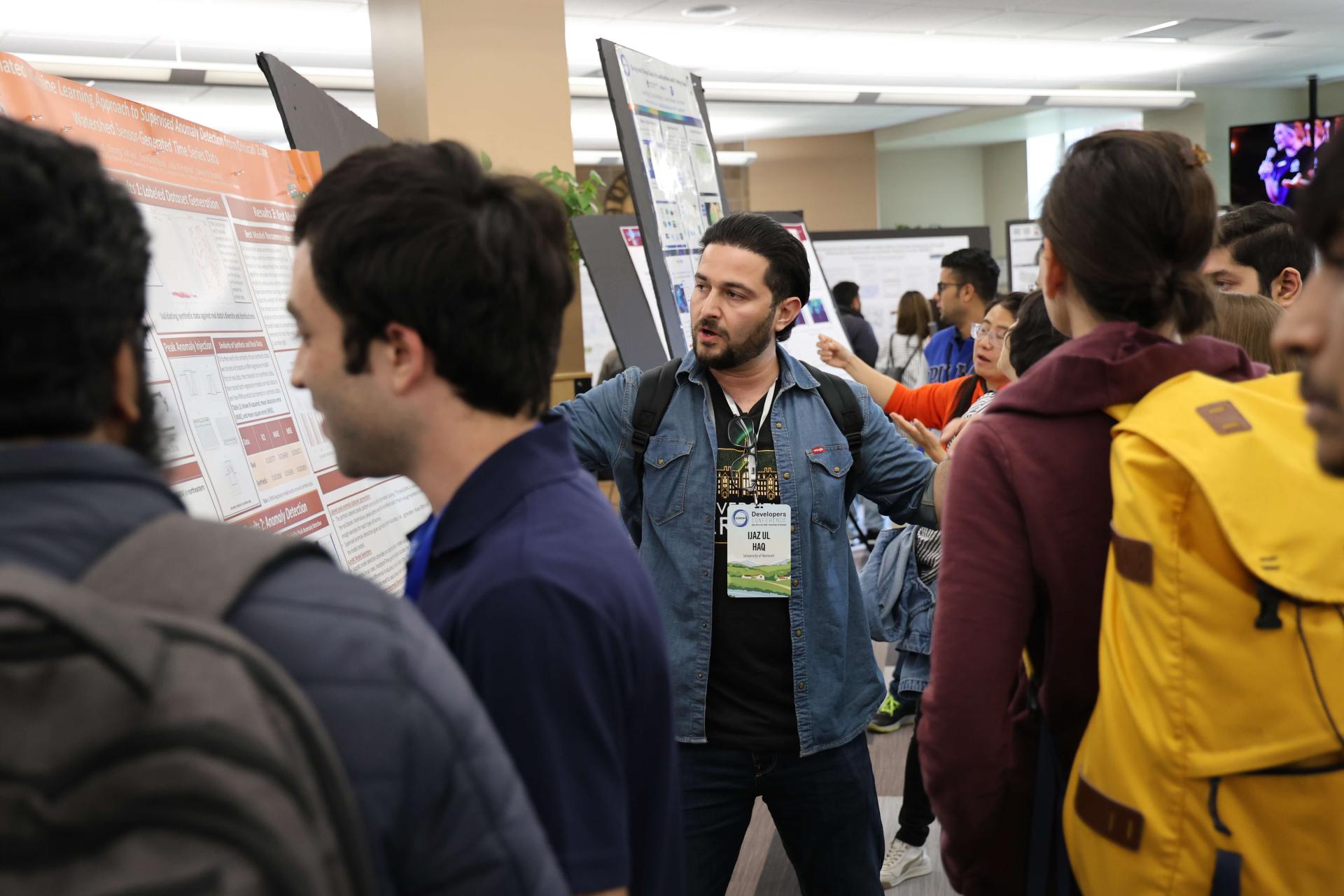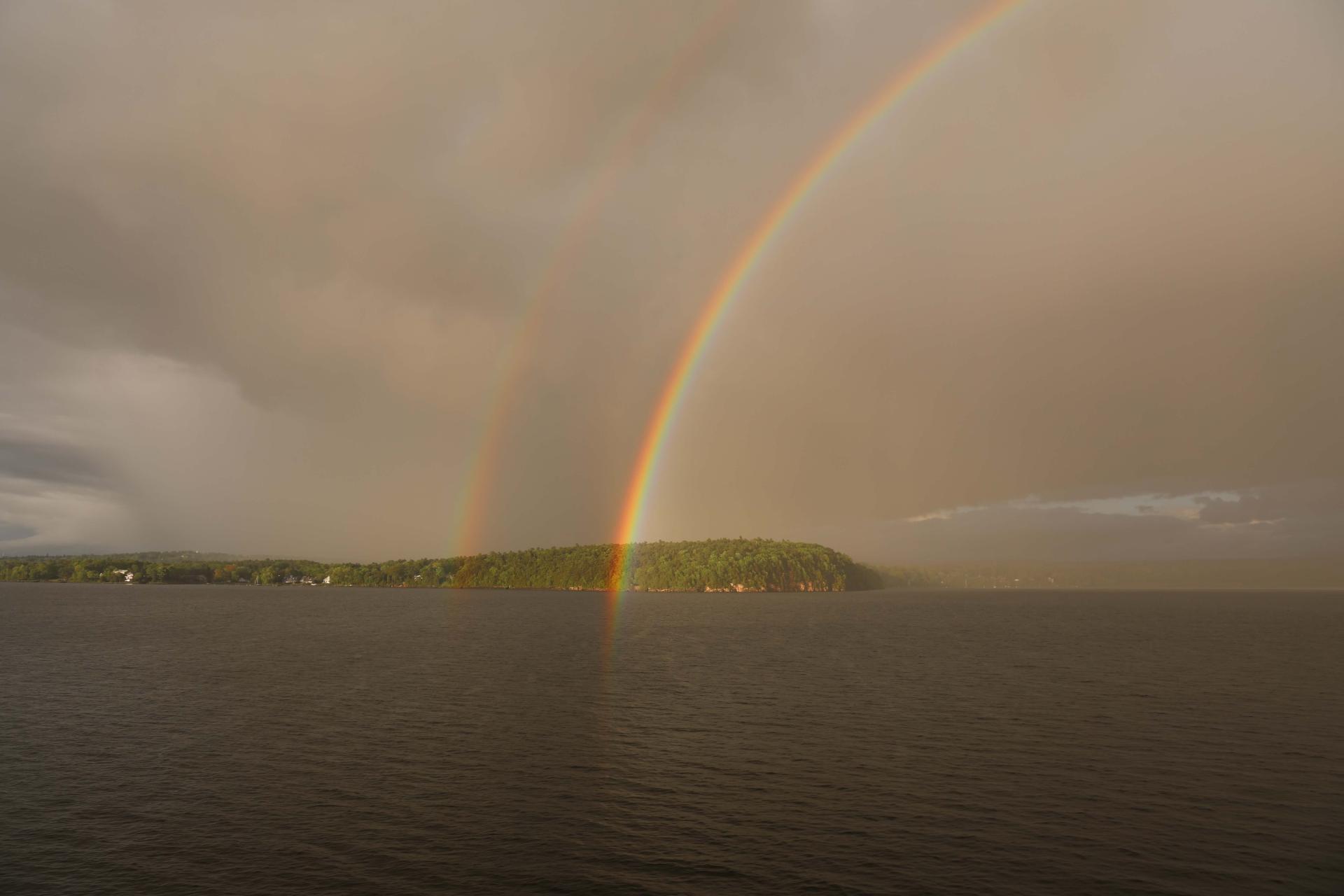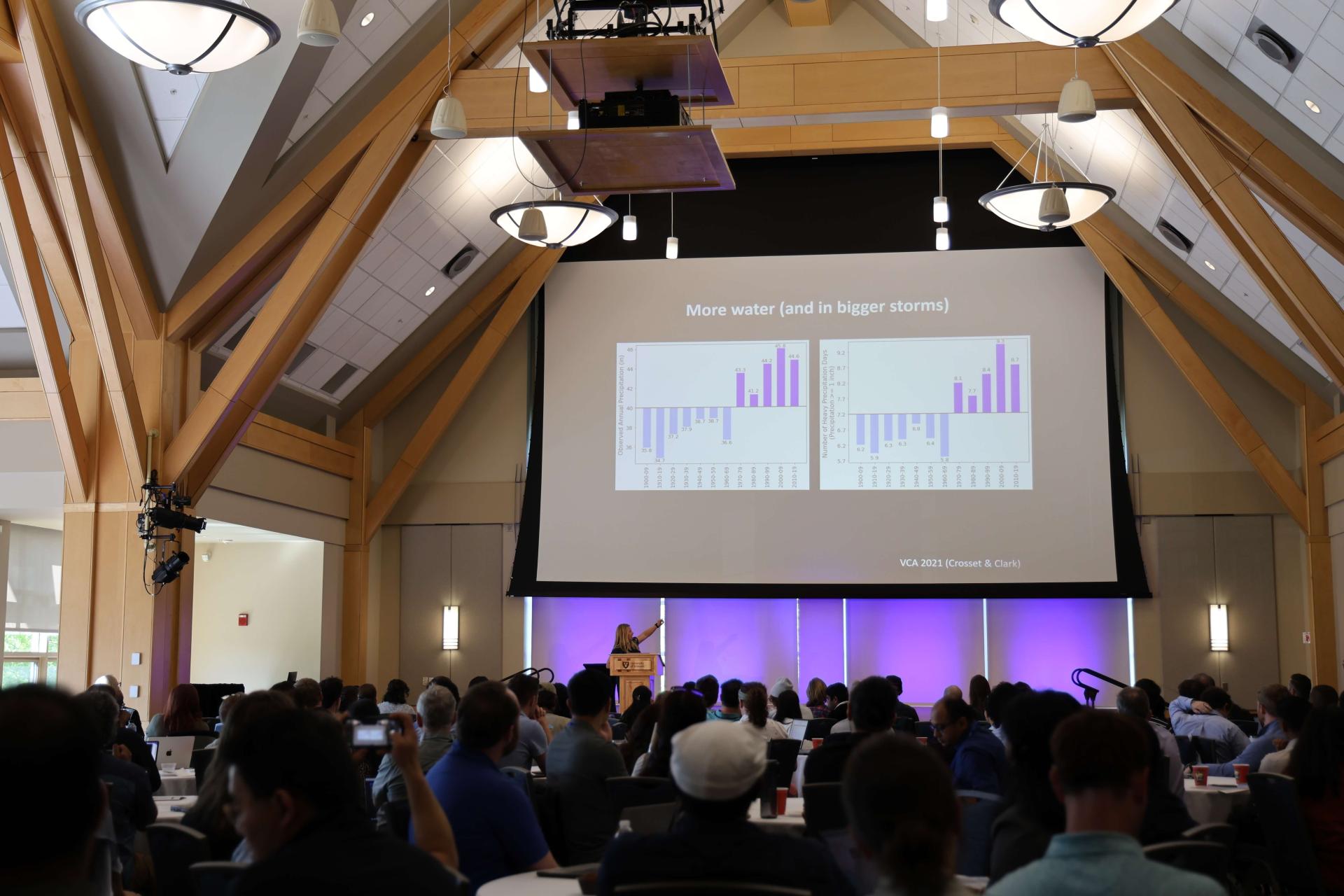Two weeks ago, the University of Vermont hosted nearly 250 of the top water resources scientists at an annual Developer’s Conference (DevCon) committed to advancing water prediction and risk communications. The consortium, The Cooperative Institute for Research to Operations in Hydrology (CIROH), convened participants from 40 different states and provinces for workshops, plenary sessions, and development activities, emphasizing wide-ranging topics such as machine learning for flood prediction and how to better communicate natural hazard risk, something every Vermonter can appreciate after the last couple of hydrologically interesting years.
CIROH scientists, from 28 institutions across the US—academic, government, and private, work with NOAA’s National Water Center to build resilience and find solutions to water-related challenges. Their work revolves around improving the understanding of hydrologic processes, operational hydrologic forecasting techniques and workflows, community water modeling, translation of forecasts to actionable products, and use of water predictions in decision making.

The University of Vermont, led by the Water Resources Institute (WRI), is one of the leading partners in CIROH. UVM faculty, post-doctoral researchers, and students from a variety of disciplines advance important watershed modeling, risk communication, and related research under the CIROH program.
The WRI’s faculty members kicked off DevCon with pre-conference field trips that looked at water quality and flood impacts in Vermont. Dr. Rebecca Diehl, a Research Associate Professor in UVM's Department of Geography & Geosciences, took attendees to Cota Field, a floodplain monitoring site along the conserved Lewis Creek. There, participants were able to view impacts of the recent historic flooding, engage in field-based efforts to verify flood dynamics, and learn about on-going science, management, and policy work to improve resilience to climate change by restoring floodplain and wetland function.
Dr. Ana "Mindy" Morales-Williams, an Associate Professor at UVM’s Rubenstein School of Environment & Natural Resources and Interim Director of the Rubenstein Ecosystem Science Laboratory, took conference goers on a striking excursion, hosting two trips aboard UVM’s research and teaching vessel, Marcelle Melosira. On Lake Champlain, she and Dr. Andrew Schroth, a Research Associate Professor in Geography & Geosciences, discussed CIROH research that is working to understand harmful algal blooms and Vermont’s on-going efforts to address water quality concerns. Participants were exposed to instrumentation used to monitor lake health and received a first-hand account detailing the scope of lake research done at UVM. The sun even managed to shine, making the welcome to Vermont even more memorable!

With the previous evening’s outings behind them, attendees woke bright and early for Day 1 of DevCon, receiving a warm welcome and notes of gratitude from Vermont Senator, Peter Welch. He addressed the research community and urged attendees to remain dedicated to their work, acknowledging the importance of research and its applications in making communities safer and more prepared in the wake of extreme events. Citing the devasting Vermont floods of 2011, 2023, and 2024, he acknowledged just how significant this work is to individuals and organizations across the state and the nation, as these communications, monitoring, and forecasting efforts can save homes and lives.
Encouraging the participants to stay committed to their inquiries and to remain resilient, Welch urged, “we have to be patient, and we have to be confident that at the end of a sustained commitment to this enterprise of inquiry that we will find things that have operational impact – that make people safer and make people have a better present and better future.”

Schroth and Dr. Gilian Galford, the Director of the Climate Measurements Center of Excellence at UVM, followed Welch’s remarks, leading plenary sessions highlighting the Vermont Climate Assessment and research focusing on the drivers of water quality in the Lake Champlain Basin. Their keynotes highlighted the breadth of water-related research UVM engages in across colleges and departments.
This momentum persisted throughout the week, as WRI post-docs and students were featured, showcasing their work in poster sessions and lightning talks, and engaging the community in workshops encompassing machine learning and AI, science communications in hydrology, and improvements in flow prediction and water quality forecasting.

"After two years of attending the meeting in Salt Lake City, it was a privilege to welcome CIROH researchers and staff to the Green Mountain State”, said Dr. Keith Jennings, the WRI’s Director of Research. “These few days were incredibly productive, leaving me with an even deeper appreciation of the work we do at UVM and how we collaborate with our partners.”
CIROH-supported research at the University of Vermont has led to new data products to improve understanding of flood attenuation in river corridors, the application of artificial intelligence to forecast water quality in Lake Champlain, insights into the value of forecast information for emergency responders and communities, and policy briefs delivered to the Vermont legislature following historic floods in 2023 and 2024.
“UVM is establishing a national reputation for our leadership in water predictions, solutions to flooding and water quality threats, and policy recommendations around water hazards,” remarked Beverley Wemple, the Director of the Water Resources Institute. “Our historic commitment to use-inspired and community-engaged research allows us to make key contributions to CIROH’s nationwide effort to improve operational water forecasting.”
The conference was sponsored by the University of Alabama in collaboration with NOAA, USGS, and the US Army Corps of Engineers. The full conference description and agenda can be found at https://ciroh.ua.edu/devconference/2025-ciroh-developers-conference/

